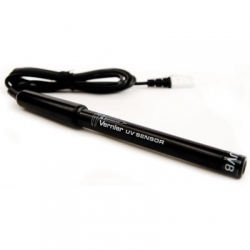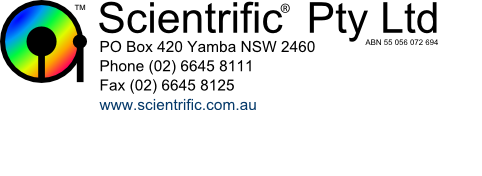
UVA and UVB sensors are visually similar
Enlarge

UVA and UVB sensors are visually similar
Enlarge
Vernier UVA Sensor
Order code: UVA-BTA
VERNIER UVA SENSOR
The Vernier UVA Sensor is an ultraviolet light sensor that responds primarily to UVA radiation (approximately 320 to 390nm).
It is ideal for experiments using UV lamps.
UVB-BTA Vernier UVB Sensor is designed for experiments using sunlight as the UV source and is the sensor recommended for the UV experiments included in Vernier lab books.
Requirements:
This sensor requires suitable software and an interface such as one of the Vernier LabQuest variations or Vernier Go-Link.
For comprehensive details of the possible sensor/interface/software combinations see the Compatibility Guide link below.
Specifications:
• UV peak sensitivity: one volt per 3940mW/m2 at 340nm
• Wavelength sensitivity region, approximate: 320-390nm (320-375nm, half-sensitivity points)
• Dimensions: 21cm x 2cm diameter
• Typical Resolution: 5mW/m2
• Time response: approximately 2s to reach 95% of final reading
| User Manual | Vernier UVA Sensor | ||
Educational use only:
Vernier and Kidwind products are designed for educational use. They are not appropriate for industrial, medical or commercial applications. Details
Warranty
- Warranty: 5 year limited warranty
Dimensions- Package size (HxWxD): 19x152x229mm
- Packed weight: 80g
Last edited 9th Jan 2025
 This product is used in teaching these Australian Curriculum codes:
This product is used in teaching these Australian Curriculum codes:
ACSSU176 - Biological Sciences - Ecology - Ecosystems consist of communities of interdependent organisms and abiotic components of the environment; matter and energy flow through these systems
Click a curriculum code to see other products that relate.
| Works with: | From |
| LABQ2 - Vernier LabQuest 2 Data Logger and Interface | |
| LQ-MINI - Vernier LabQuest Mini Data Logger Interface | $470.00 |
| LQ-STREAM - Vernier LabQuest Stream Wireless Data Logger | $698.00 |
| GO-LINK - Vernier Go!Link Data Logger Interface with Logger Lite Software | $186.00 |
| SC1093 - UV Beads Bag of Mixed Colours - Approximately 250 | $10.00 |
| Similar Products: | From |
| GDX-LC - Vernier Go Direct Light and Colour Sensor | $246.00 |
| LS-BTA - Vernier Light Sensor - Lux Meter | $172.00 |
| UVB-BTA - Vernier UVB Sensor | $296.00 |
Documents: Catalogue | Vernier Catalogue K-12 | Catalogue | Vernier Catalogue Uni | Catalogue | Scientrific April 2025 Mini Catalogue | Catalogue | Vernier 2025 K-12 Catalogue | Catalogue | Vernier 2025 University Catalogue | Compatibility Guide | Sensor-Interface-Software Requirements (external link) | User Manual | Vernier UVA Sensor | | |||||||||||||||
Note: Prices do NOT include GST or freight


